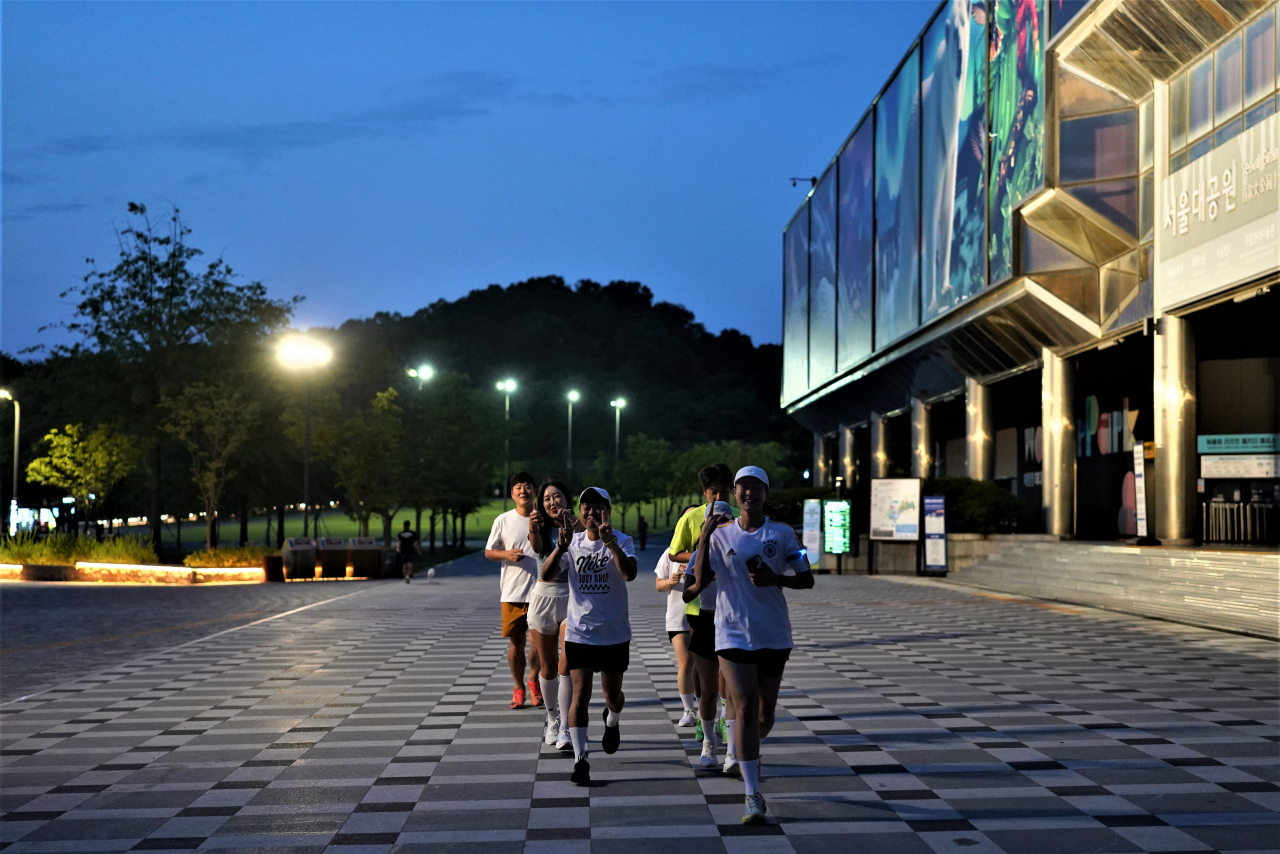 |
Seoul Ddimbak members pose for photos while running along the trail at Seoul Grand Park in Gwacheon, Gyeonggi Province, on June 12. (Lee Si-jin/The Korea Herald) |
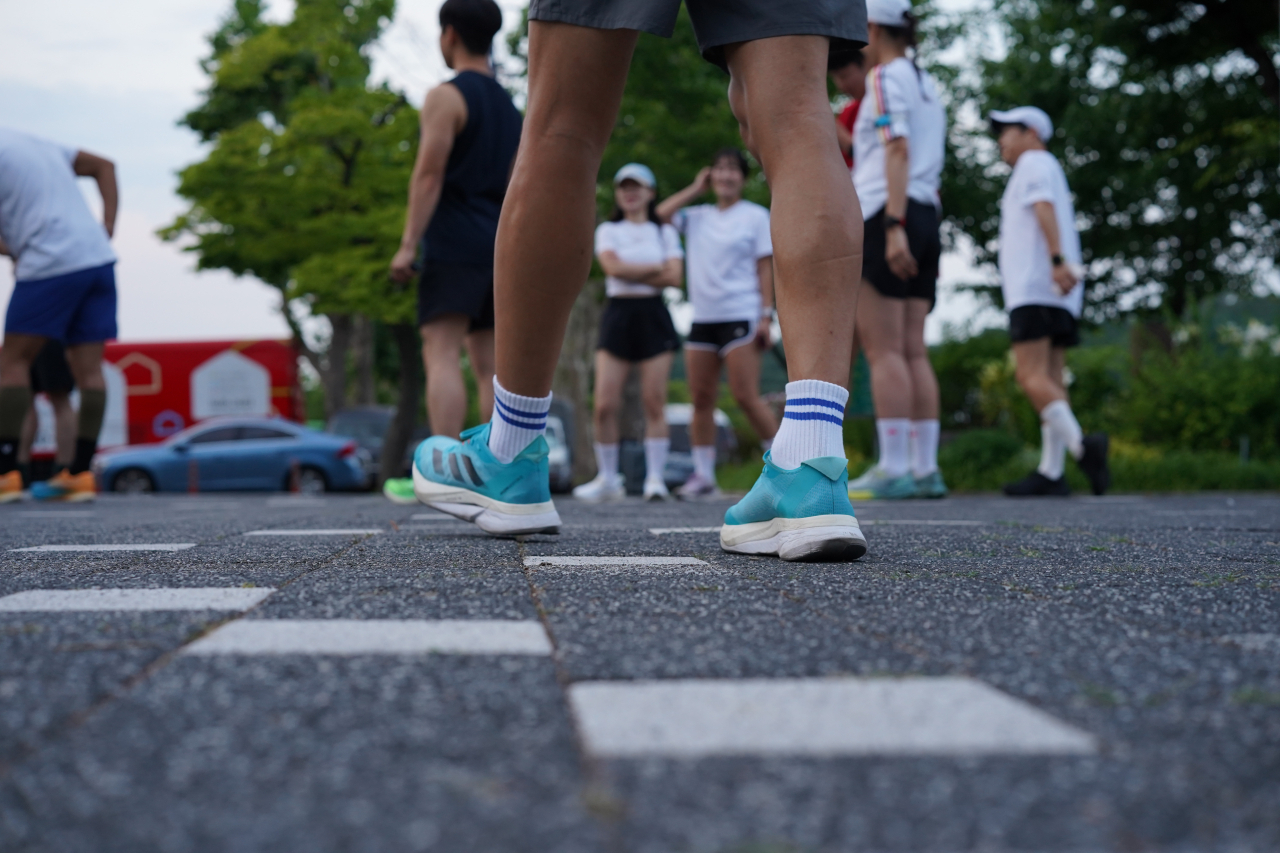 |
Seoul Ddimbak members warm up before a regular running session. (Lee Si-jin/The Korea Herald) |
GWACHEON, Gyeonggi Province -- An increasingly common evening sight at Seoul's Han River parks is groups of runners wearing glowing wrist bands.
While some people choose to exercise alone, many Korean runners run together by joining “donghohoe,” a Korean term similar to club, whose members share similar interests and goals.
Most of these running crews are area-based, gathering runners from nearby districts and running a fixed course.
However, Seoul Ddimbak, a running crew formed in 2021, does not limit itself to a single area.
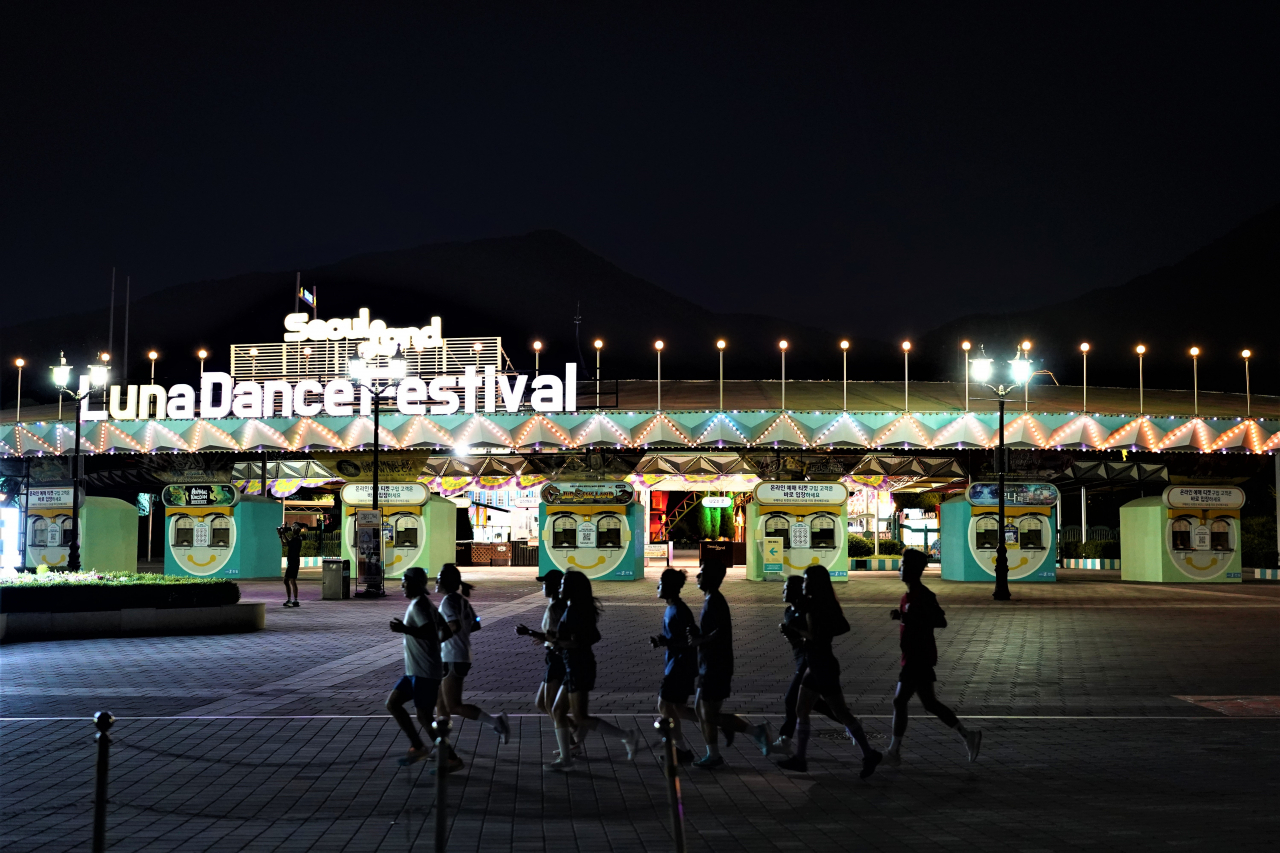 |
Seoul Ddimbak running crew (Lee Si-jin/The Korea Herald) |
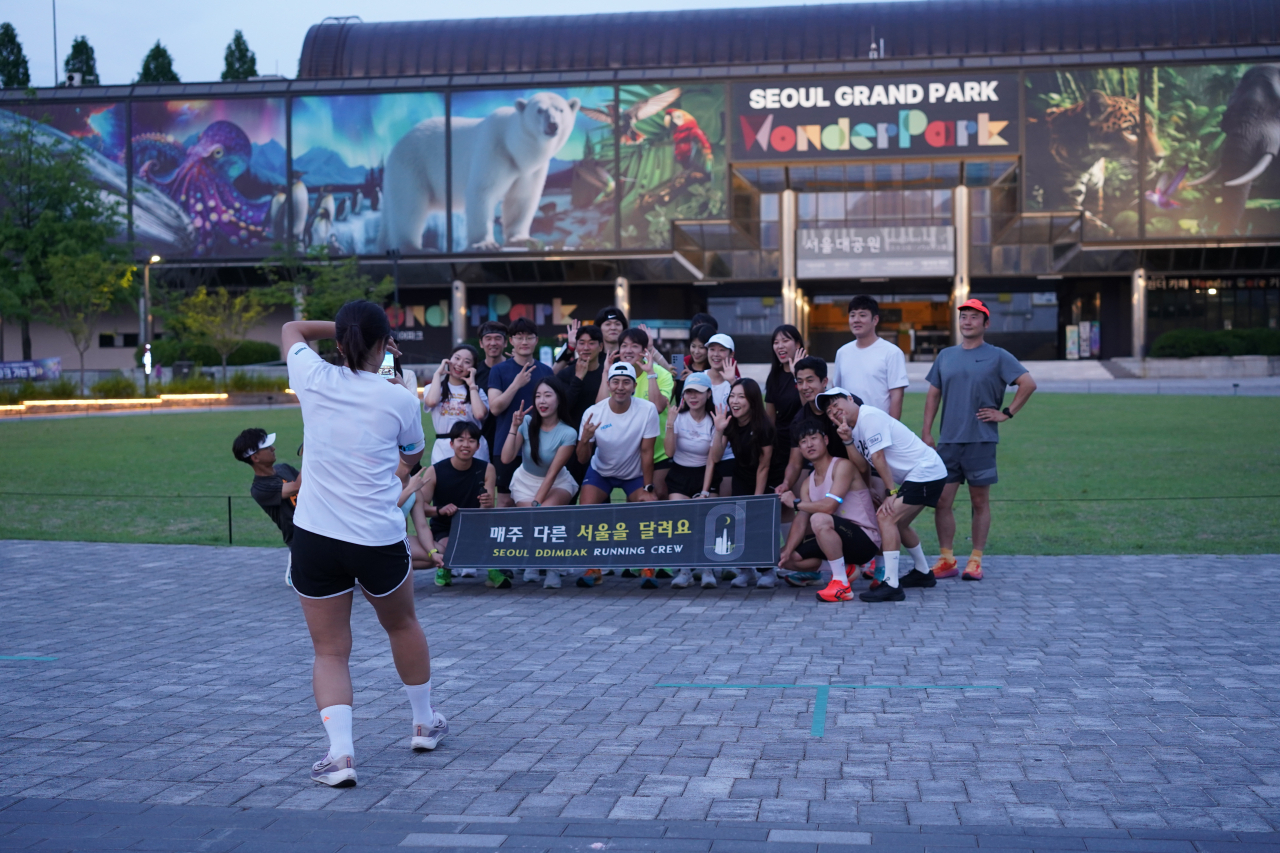 |
Seoul Ddimbak members pose for photos before their run at Seoul Grand Park in Gwacheon, Gyeonggi Province, on June 12. (Lee Si-jin/The Korea Herald) |
“Seoul Ddimbak is a crew formed to run through different areas of Seoul every week. We don’t really see running as an exercise. It is more like traveling through diverse places in Seoul. This is the reason why some of us named our regular runs the ‘run-trip.’” Lee Sung-moon, the Seoul Ddimbak organizer who is in his 30s, said in a recent interview with The Korea Herald.
Lee, who has run with other crews for more than six years, explained that one of the biggest charms of Seoul Ddimbak is that the members get to know unfamiliar parts of Seoul and enjoy some unique programs via running.
“After running in multiple clubs, I felt that having a quality program to entertain the crew members was important to continue the healthy running journeys together for a long time. We have done some running with themes, like a city run, nighttime running, plogging and more,” Lee told The Korea Herald.
Lee added that the most popular program among Seoul Ddimbak members is what they call “meokeurun,” meaning “run to eat.”
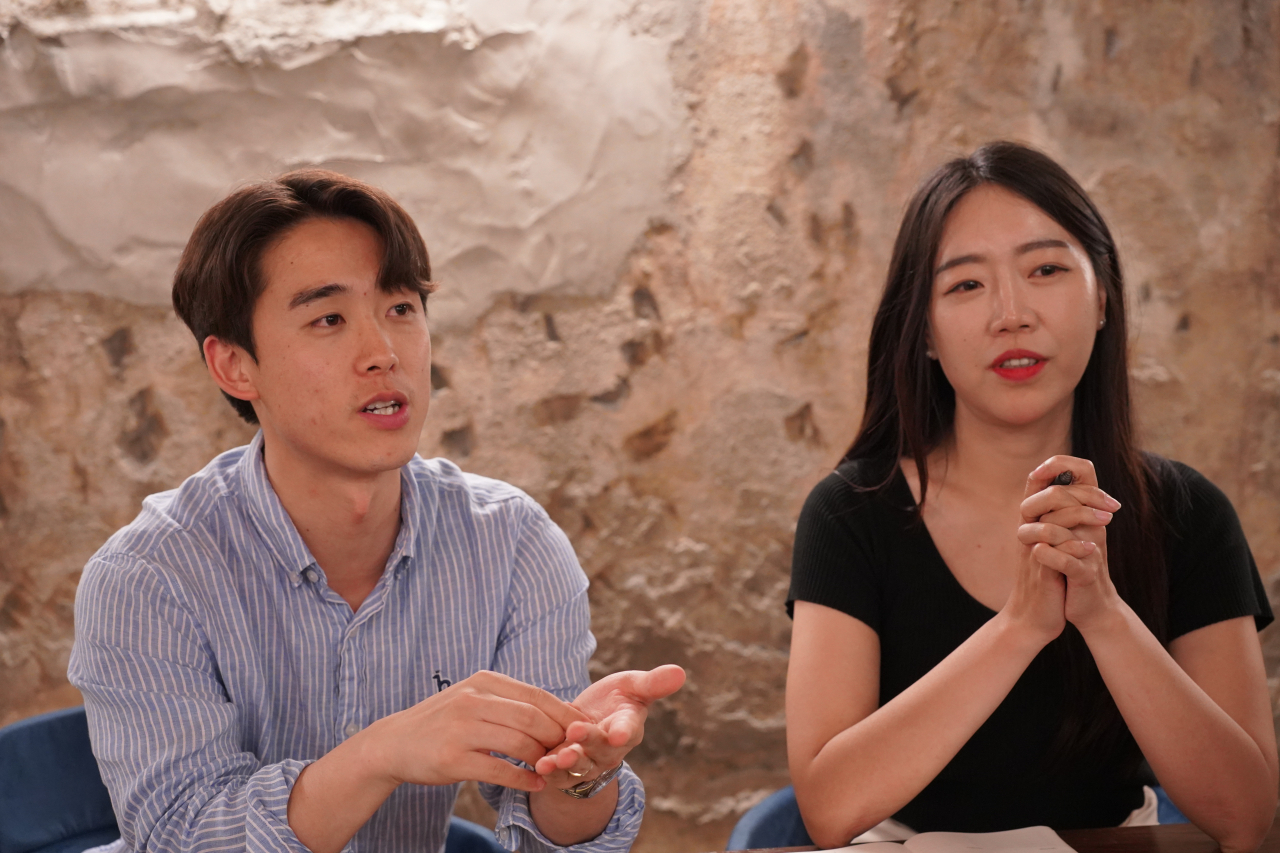 |
Seoul Ddimbak organizer Lee Sung-moon (left) and crew member Kim Hee-youn share their running crew experience in a recent interview with The Korea Herald at a cafe in Gwanak-gu, southern Seoul. (Lee Si-jin/The Korea Herald) |
“Meokeurun is a hit program in which most of our members make the time to take part. After setting a starting point, our goal is either an Instagram-popular dining place or a restaurant offering delicious seasonal food,” Lee said.
“We had a very successful webfoot octopus run a few weeks ago, where we set off to eat fresh webfoot octopus," he said.
Though the programs might be different every week, Seoul Ddimbak's regular schedule includes a thorough warm-up together before dividing themselves into three to four groups, each with a different finishing time.
Runners are not forced to overwork themselves to follow a veteran’s pace or feel pressured to complete the scheduled course.
Members can enjoy the nightscape of Seoul and pose for photos.
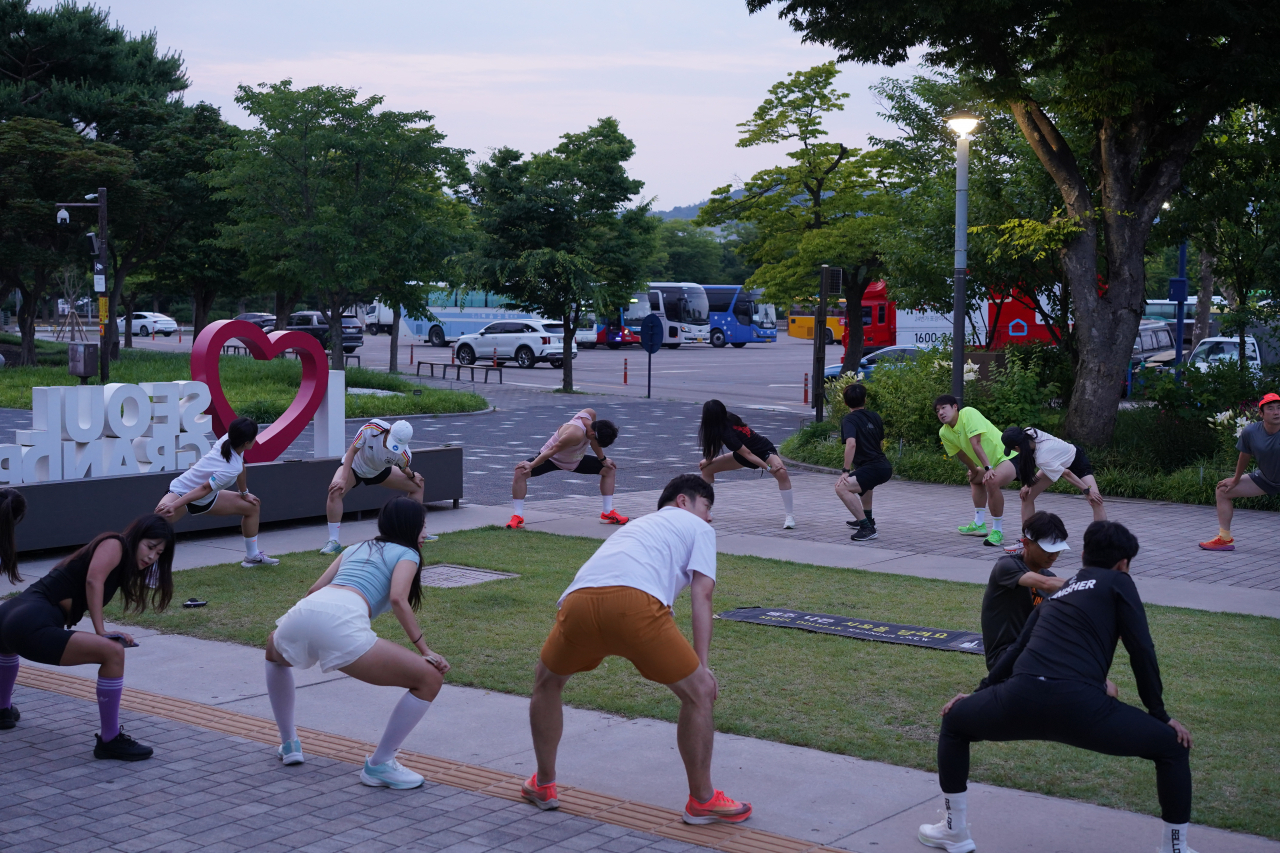 |
Seoul Ddimbak members warm up before starting on a regular run at Seoul Grand Park in Gwacheon, Gyeonggi Province, on June 12. (Lee Si-jin/The Korea Herald) |
Kim Hee-youn, an enthusiastic member of Seoul Ddimbak, said that she had never expected running to be this exciting.
“The crew recently made an ‘art run,’ where you run with your real-time smartphone GPS tracker on and draw a certain pattern (or shape) on your map. If you run along the walking trail at Seoul National University, for instance, the tracker makes a ‘chicken leg-shaped’ course. This is what some runners call a chicken run,” Kim told The Korea Herald, her face beaming.
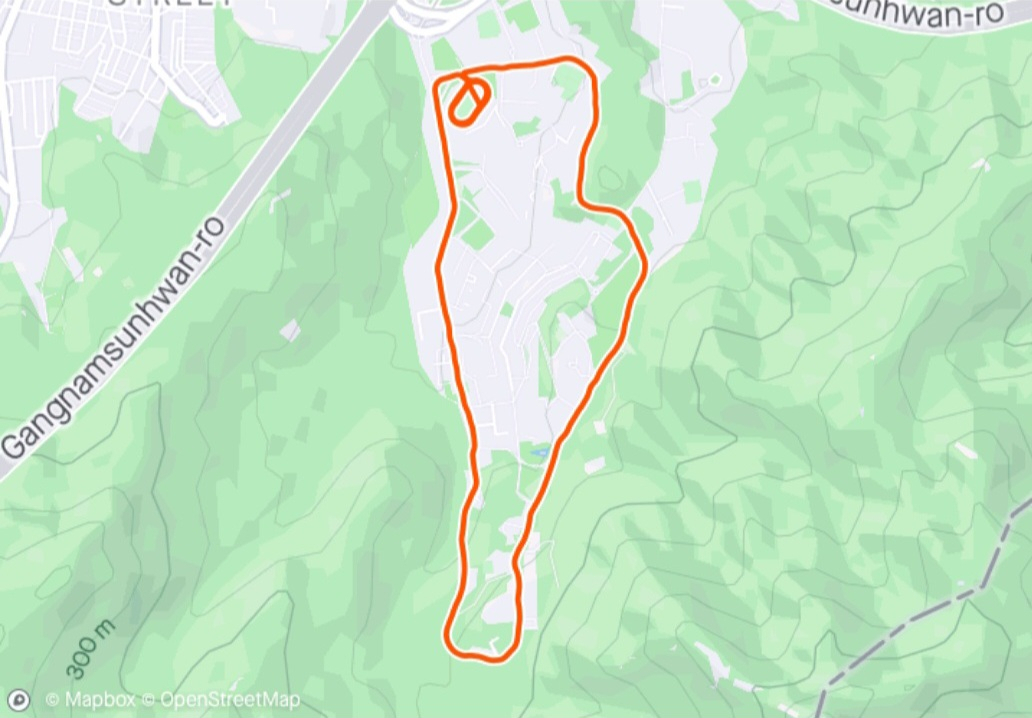 |
This image shows the chicken leg-shaped running course at Seoul National University in Gwanak-gu, southern Seoul. (Courtesy of Kim) |
“We find hidden jewels of Seoul by exploring different areas with great runners,” she said.
Though planning the courses, ensuring safety and creating new programs are not as easy as one might think, Lee -- the organizer -- wishes to do something more for the crew.
“Seoul Ddimbak has almost 50 members ranging from people in their 20s to 50s. Some members are older than me, but they are like babies. If they are running beginners, I (and other veteran runners) want to take good care of them and lead them to continue this wonderful hobby,” he said.
“After finding the true joy of running, some members, who got into proper running with this crew, say that they wish to practice more to join a local marathon event. These are some of the things that make me proud to be the person who leads Seoul Ddimbak,” Lee said.
Lee, who made his 176th run with the crew at Seoul Grand Park in Gwacheon, Gyeonggi Province, let in on one of the stunning walking trails in Mapo-gu, western Seoul.
“The course that starts at Seoul’s World Cup Stadium, crossing Bulgwangcheon Stream, Nanji Hangang Park and leading all the way to Oil Tank Culture Park, is my favorite. It is truly a magnificent course with a splendid nighttime cityscape,” he said, assuring that even those who feel like they know Seoul will have a unique running experience.
Koreans find friends and build connections beyond their existing social networks by meeting people who share common interests in clubs, called "donghohoe" in Korean. The Korea Herald introduces some unique clubs in this series, giving a peak at social life in Korea. -- Ed.







![[Today’s K-pop] Blackpink’s Jennie, Lisa invited to Coachella as solo acts](http://res.heraldm.com/phpwas/restmb_idxmake.php?idx=644&simg=/content/image/2024/11/21/20241121050099_0.jpg)